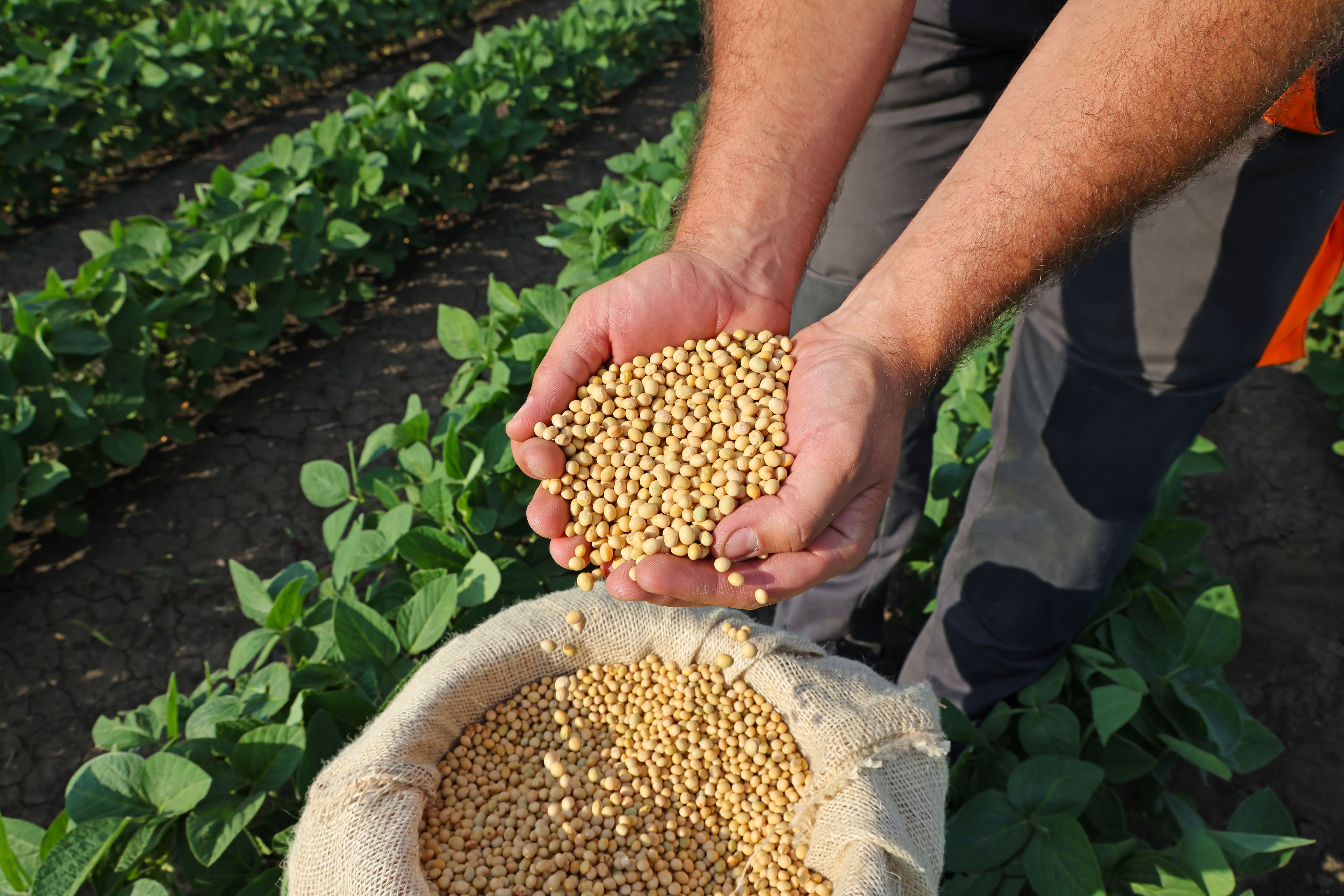
In the latest of our series exploring the world of commodities, the Daily Update explores the ever-increasing demand for soy or soya beans.
Soy, or soya, beans are the world’s largest protein crop but also the most efficient source of protein per hectare on the planet.
But this is not really a single crop. There are more than 2,500 varieties of soybean grown around the world.
Most soybeans are crushed for soybean oil and soya flour, but the beans are also used to make a variety of vegetarian food including tofu, miso, edamame, tempeh and soy milk.
Soya is also used as an animal feed with most commercially produced beef, fish, chicken, egg and dairy products contain soya, according to the World Wildlife Foundation (WWF).
The US and Brazil are the two largest producers in the world, accounting for approximately 66% of the approximately 358 million tons of total production in the 2018-2019 crop year, according to US Department of Agriculture.
Global production figures
Annual soybean production by country (2023 tonnage)
Brazil — 125,887,672
United States — 123,664,230
Argentina — 37,787,927
China — 14,193,621
India — 13,786,000
Paraguay — 11,045,971
Canada — 7,266,600
Ukraine — 4,460,770
Russia — 4,026,850
Bolivia — 2,942,131
Global trade
Soybeans account for a small, but growing aspect of world trade. According to the OEC, in 2021, soybeans were the world’s 42nd most traded product with trade in soybeans representing 0.0037% of total world trade.
However, that still represents total trade worth $78.5bn. And between 2020 and 2021 exports of soybeans grew by 22.4%, from $64.1bn to $78.5bn,
The major players
In 2021 the top exporters by value were:
Brazil - $39bn
United States - $27.8bn
Paraguay - $2.99bn
Argentina - $2.53bn
Canada - $2.48bn
And the top importers were:
China - $44.2bn
Mexico - $3.22bn
Argentina - $2.26bn
Spain - $2.25bn
Egypt - $2.01bn
As these lists suggest and Finance Feeds confirms the US, Brazil, and China are the three countries that drive the soybeans market.
The US is both the world’s second-largest consumer and the world’s second-largest producer of soybeans. China is the largest consumer of the crop, accounting for no less than a third of the total world soybean demand, while Brazil is the world’s largest supplier.
Booming soybean production in the US and Brazil has been partly offset by negative supply issues in Argentina, where a severe lack of rainfall made field work difficult and forced farmers to delay soy planting.
Argentine drought
Business Recorder reports that Argentina’s Rosario grains exchange cut its forecast for the 2022/2023 soybean harvest to 23 million tonnes, down from 27 million tonnes previously estimated, due to drought.
The Argentinian government has been trying to encourage more soybean exports in an attempt to attract hard currency to the inflation hit nation, reports Reuters.
However, its so-called ‘soy dollar’ scheme, which provides access to a preferential exchange rate of 40% more than the official rate for all sales of soybean derivatives has been met with scepticism from both farmers and shippers after it launched this month.
On the demand side, soybean imports to China are likely to decrease in the coming years after the government launched a campaign to reduce reliance on imported soybeans by cutting the soybean meal inclusion rates in feed rations.
Environmental issues
Soybean production in Brazil has been linked to deforestation, reports Sky, which reports that an investigation by environmental groups has shown evidence of a link between illegal deforestation in the Amazon and supplies of soya beans shipped from Brazil to the UK.
According to this investigation the implication is that the UK meat industry and the supermarkets it supplies are unwittingly causing illegal deforestation in the Amazon.



